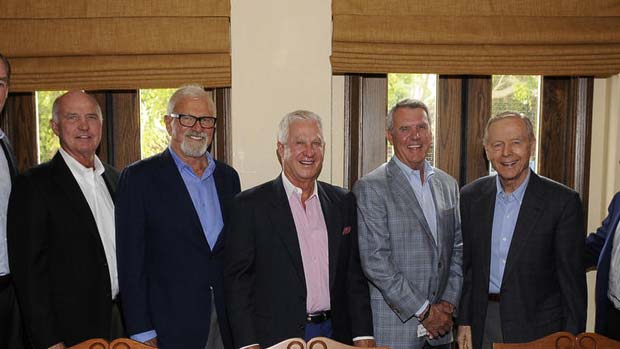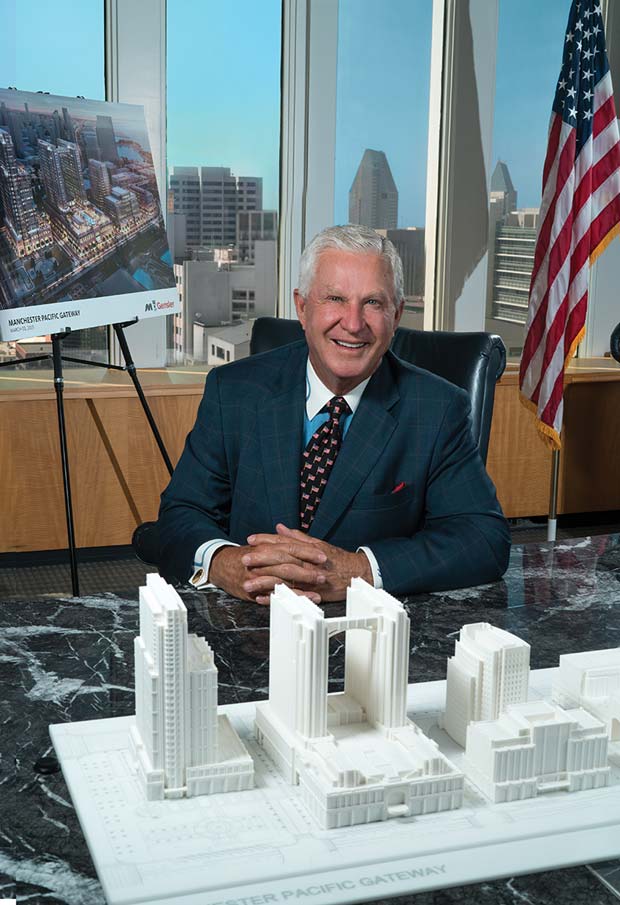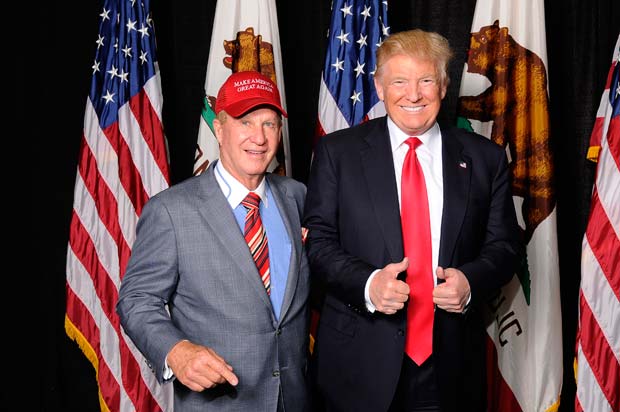
The historic and popular Hotel Del Coronado. Photo via Wikimedia Commons
By Papa Doug Manchester
I had the good fortune and blessing to grow up in America’s Finest City in a simpler era, when San Diego County’s population was well under 1 million and there were no issues with congestion.
Interstates 5, 805, 15 and 8 did not exist. UC San Diego didn’t open until 1964. There was no Horton Plaza, Fashion Valley, Convention Center or San Diego Chargers. The Chargers came in 1961. The Padres moved from the minor leagues to the majors in 1969.
We were truly a small Navy town then and our primary industries were tuna fishing and canning. Like so many others, my family came to this region from elsewhere. We moved to Coronado from Los Angeles when my father took a job as a factory worker at Rohr Aircraft in Chula Vista. Every day he commuted down the strand through Imperial Beach because it was faster than taking the ferry to the mainland.
The Coronado Bridge didn’t open until 1969. As a kid I sold newspapers to people taking the ferry and remember that the Pacific Coast Padres used to play at Lane field at the foot of Broadway.
At that time I never in my wildest dreams conceived that someday I would build the second largest Marriott and Hyatt hotel resorts in the nation on the very spot where the ferry boats landed.
I went to high school in San Diego and earned a degree from San Diego State University. In those wonderful days, downtown San Diego was not a destination. A center-city adventure was visiting the moving sidewalk in front of the El Cortez Hotel and riding on its glass elevators on the outside of the building. It was one of the tallest structures in the area then.
Of course, we had the world-famous San Diego Zoo, iconic beaches, Balboa Park, Old Town and the Del Mar Race Track. The hotel industry was scattered, with tourists congregating around Shelter Island, the Islandia and Bali Hai Hotels in Mission Beach, and the Town and Country and Stardust in what later became the Hotel Circle area of Mission Valley.
There were many venerable visionaries who helped transform San Diego into the tourist mecca we know today. The Bahia Resort Hotel, owned by Bill Evans, was the first commercial lessee on Mission Bay, opening in early 1953 with 52 rooms after the City of San Diego offered several parcels of land for commercial development. The Evans family then acquired the right to develop land at the northwest corner of Mission Bay in 1958 for the Catamaran Resort Hotel and Spa. In April 2002 the Evans family opened the doors to The Lodge at Torrey Pines, a AAA Five Diamond resort that blends seamlessly into La Jolla’s Torrey Pines State Reserve and Torrey Pines Golf Course.
Larry Lawrence purchased a deteriorating Hotel del Coronado in 1963. Lawrence invested $150 million to refurbish and expand much of the hotel. He doubled its capacity to 700 rooms. He added the Grande Hall Convention Center and two seven-story Ocean Towers just south of the hotel.
Charles H. Brown, who is said to have once run a vegetable stand with his wife at the corner of Midway and Rosecrans and later owned a hotel on El Cajon Boulevard, opened the Town and Country Hotel in Mission Valley in 1953 with 46 rooms. Today, the 39-acre Town and Country, with 1,000 rooms and 165,000 square feet of convention and meeting space, acts as a regional convention center for Mission Valley.
The Kellogg Estate in La Jolla, which included the exclusive La Jolla Beach and Tennis Club, was purchased in 1935 by newspaperman Frederick William Kellogg. In 1940, his son William Kellogg took over management of the family’s estate. From 1940 to 1974, Kellogg directed the operations of the exclusive seaside resort with its private beach, Sea Lodge Hotel, the Playa del Oro Apartments, the F.W. Kellogg Building, 20 championship tennis courts and the well-known Marine Room restaurant.
Civic leader and real estate business executive James Colachis, a pioneer in the high-rise apartment building business, purchased the Scripps Inn in La Jolla in 1971 and the 338-room Rancho Bernardo Inn in 1975. As a civic leader he served on the board of trustees of the University of San Diego, the Independent Colleges of Southern California, the national board of the Salk Institute and the board of directors of Scripps Clinic of La Jolla.
These individuals sacrificed so much and contributed greatly to San Diego, which made my entry into the hospitality industry so much easier.
It’s stunning to think about how we’ve grown. One of our fastest growing communities, Carmel Valley, was farmland dissected by a two-lane road only 15 years ago. Highway 56 wasn’t completed until 2004. When I introduced the Grand Del Mar to the area in 2007, much of the valley was still undeveloped. The concept that a 5-star hotel and resort could prosper as a tourist mecca in the center of a residential community spoke to a new San Diego, with visitors far more mobile than ever before and willing to invest in elegance.
Today, San Diego County has a population of nearly 3.4 million and tourism is our third largest industry employing directly and indirectly almost 181,000 San Diegans. Visitors spend nearly $9.9 billion annually, which translates to a regional impact of over $16 billion new dollars generated for the regional economy. We host almost 34 million visitors each year and generate more than $704.6 million annually in state and local taxes.
We are one of the top life sciences and biotech locations in the nation and No. 1 in concentration of military/defense assets in the world. Forbes Magazine recognized San Diego as the second most inventive city in the world in 2013. UCSD is the No. 3 public university in the United States and No. 14 university in the world, according to one influential ranking. In 2015, we were the only city in North America selected by National Geographic as one of the “World’s Smart Cities.”
These remarkable distinctions bring tourists, businesses, conventions and residents to our area and economy. They bolster our hotel industry and retail establishments, support our restaurants and fill world-class attractions like the USS Midway Museum, the zoo, SeaWorld, LegoLand and the ever-magnificent Balboa Park. Our shoreline and beaches, as well as our proximity to the desert and mountains, continue to lure visitors from all over the world.
More and more people are migrating to our downtown district to live, work and play. Our bayfront, already one of the most beautiful in the world, is poised for new development along the embarcadero, Broadway with the Manchester Pacific Gateway Project, and the Seaport Village and Harbor Island redevelopments. These are all enormous economic opportunities that elevate us on the world stage and will continue to expand our tourism industry.
I’m honored to have spent my youth in San Diego and humbled to have witnessed the emergence of the region from a small town to a major world destination. I’m excited to live here now. My vision for America’s Finest City is that our waterfront and convention center will continue to grow and thrive, bringing more tourists, more businesses, more conventions, more hospitality and retail centers and, ultimately, more residents who will find San Diego as wonderfully irresistible as I do.
Article from the Times of San Diego




